P0335
Symptom: The engine fails to start or misfires. Other diagnostic trouble codes
(misfiring, camshaft position).
Crankshaft position sensor
Symptom of fault
The engine fails to start or misfires. Other diagnostic trouble codes
(misfiring, camshaft position).
|
Note
|
|
More diagnostic trouble codes will be generated if pin 67 of the control module is not
connected to ground.
|
Conditions
Vehicle speed >30 km/h. Engine speed >1500 rpm. Brakes not applied. The
sensor reads an incorrect number of ribs (teeth) per crankshaft revolution.
Diagnostic help
The diagnostic trouble code often indicates an intermittent fault. In the event of a
complete functional breakdown, the engine will not start and the diagnostic trouble code
cannot be generated. If the perforated ring, which is mounted on the crankshaft, has been
damaged in connection with work carried out on the basic engine, for instance, the diagnostic
trouble code may be generated.
Checking the wiring. Intermittent faults may occur as a result of occasional short circuits
and breaks in the wiring. Jiggle the leads and in-line connectors at several places and in
different directions to reveal faults in the wiring harness. Observe the multimeter, ISAT scan
tool or test lamp while carrying out this check.
Diagnostic procedure
1. Check the resistance of the crankshaft position sensor
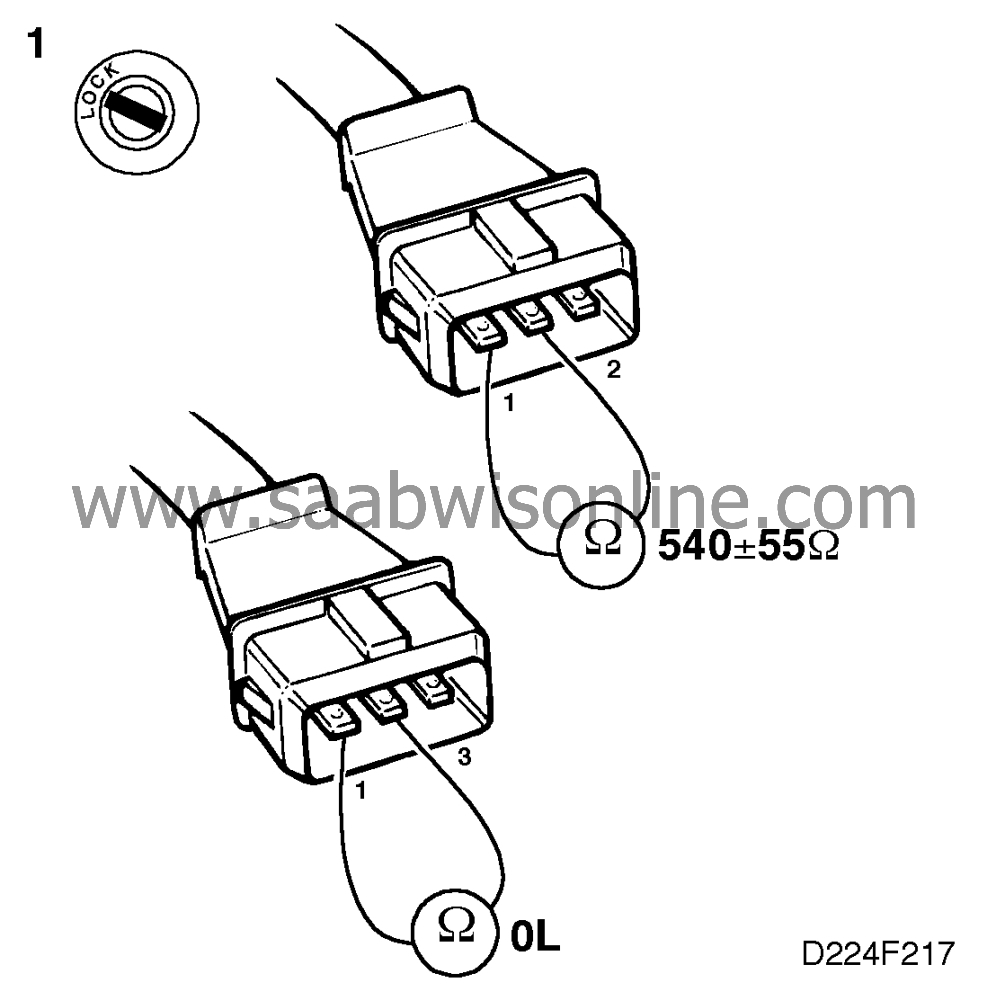
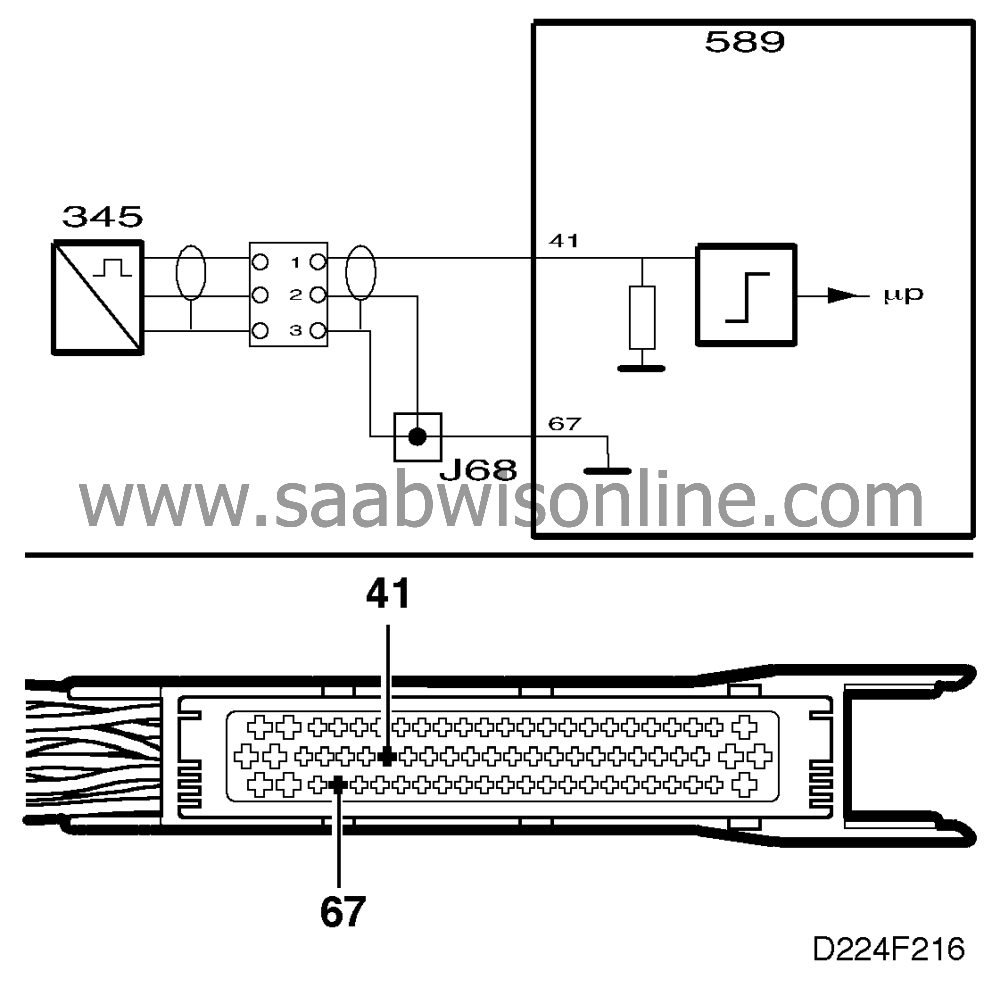
|
-
|
Unplug the crankshaft position
sensor's 3-pin connector.
|
|
-
|
Take a resistance reading on the
pins of the sensor's connector: Check the resistance of the sensor across pins 1 and 2.
|
Nominal resistance is 540±55 ohms.
|
-
|
Check for possible stray currents
between the signal lead and screened lead across pins 1 and 3.
|
Nominal resistance is infinite (OL - OverLoad).
Are the resistance readings OK?
Continue with point 2.
Change the crankshaft position sensor and continue with point 5.
2. Check the mounting of the crankshaft position
sensor
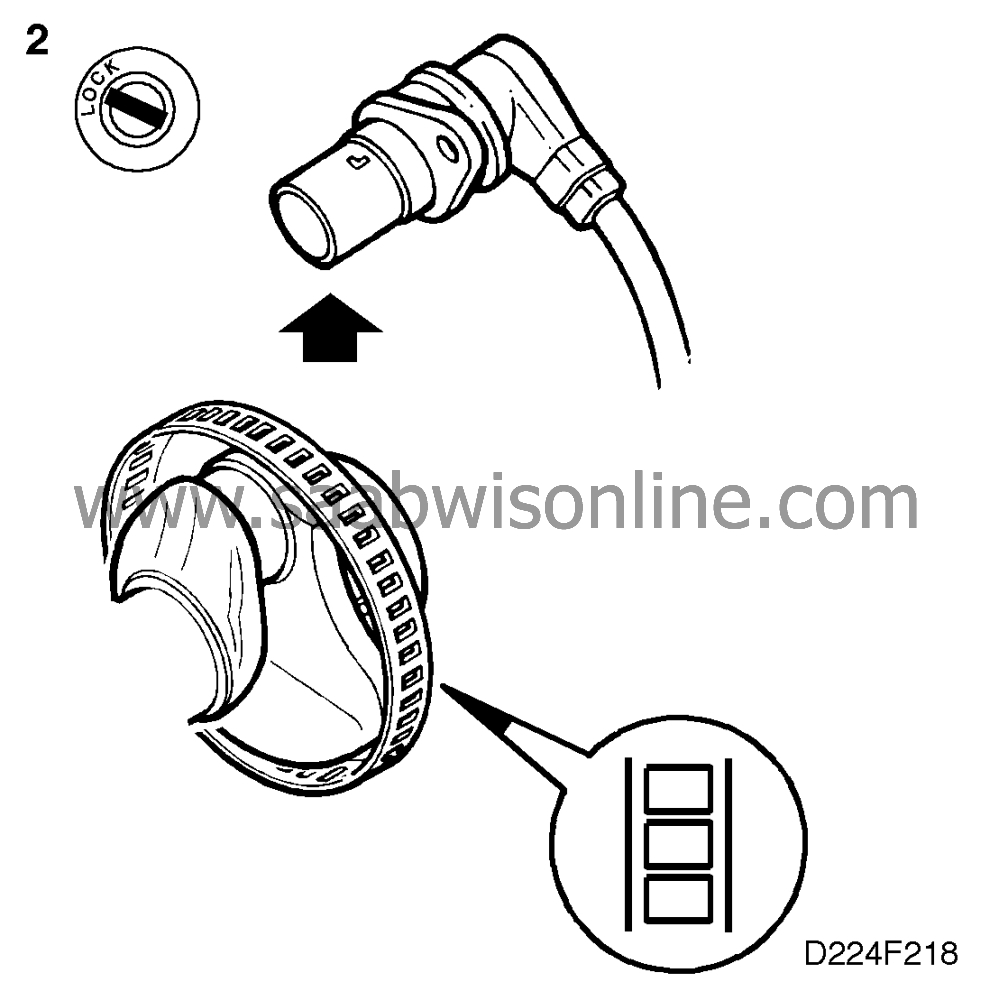
|
-
|
Remove the crankshaft position
sensor and check:
|
|
|
•
|
that the sensor tip is not soiled with
metal filings, swarf, etc.
|
|
|
•
|
that the perforated ring is firmly secured to the crankshaft (by prising it gently
with a screwdriver).
|
|
|
•
|
while the crankshaft is rotated, that the perforated ring is not skew, buckled or
otherwise damaged.
|
|
-
|
Brush off any metal shavings or
swarf on the sensor.
|
Is the perforated ring damaged or insecurely mounted?
See Service Manual 2:1 "Basic engine".
Continue with point 3.
3. Check the crankshaft position sensor's
ground and screen connections
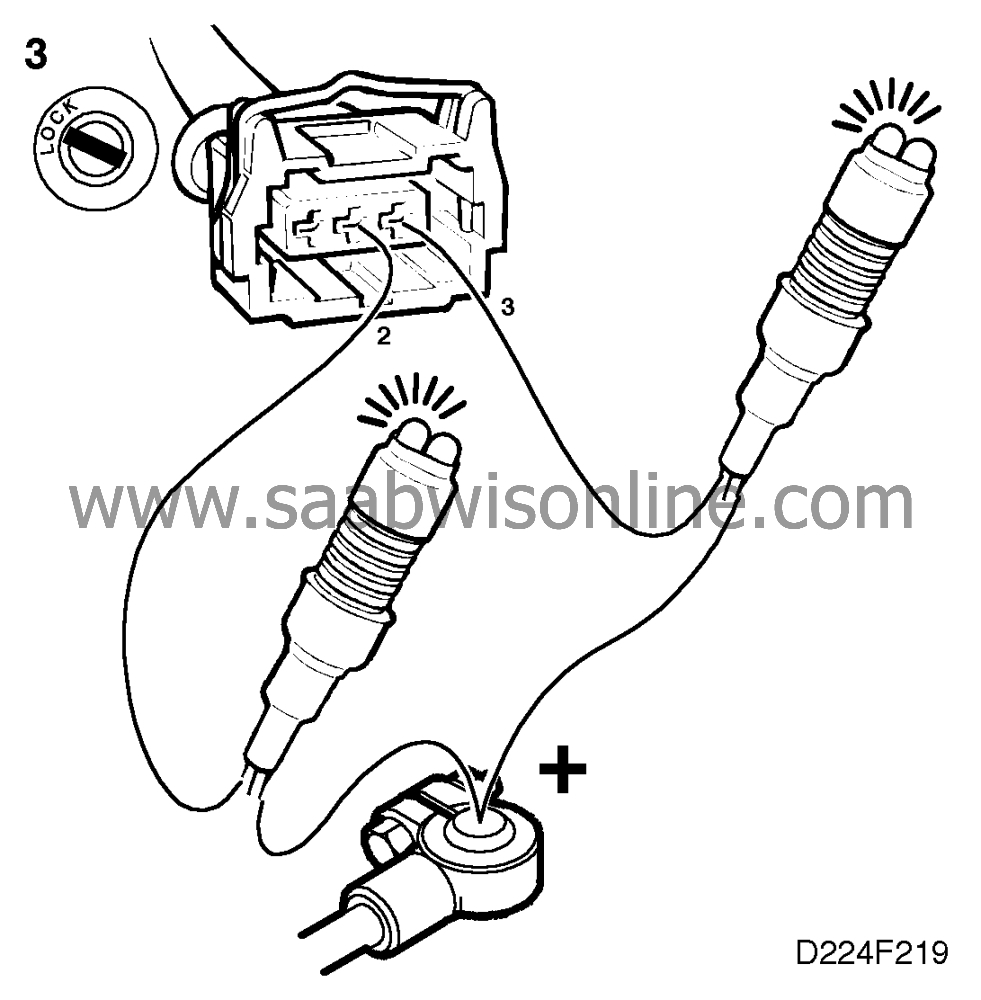
|
-
|
Connect the test lamp
to:
|
Does the test lamp light up in both cases?
Continue with point 4.
Repair or replace the appropriate lead between:
• pin 2 and crimped connection J68
• pin 3 and crimped connection J68.
Then continue with point 5.
4. Check the control module sensor
input
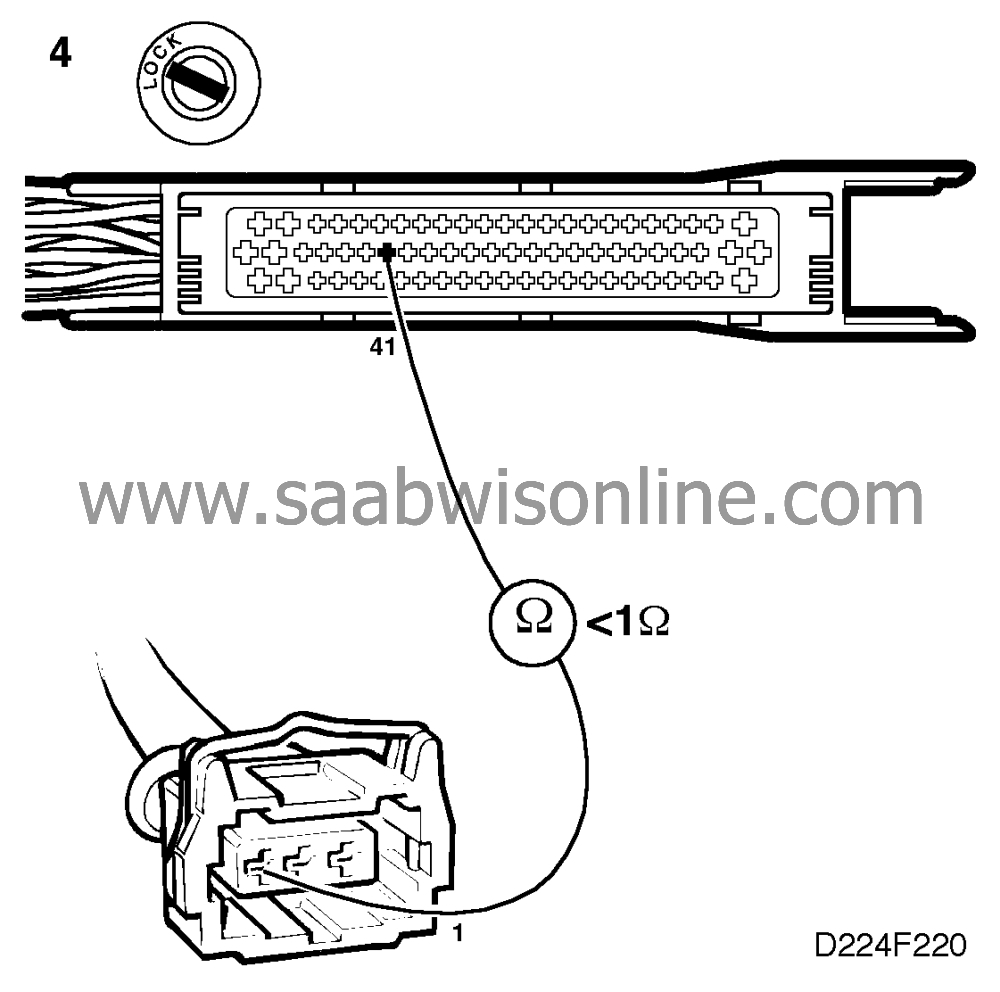
|
-
|
Check the lead between pin 1 of
the connector and pin 41 of the control module.
|
Is the lead OK?
Change the crankshaft position sensor and then continue with point
5.
Repair or replace the lead and then continue with point 5.
5. Final check
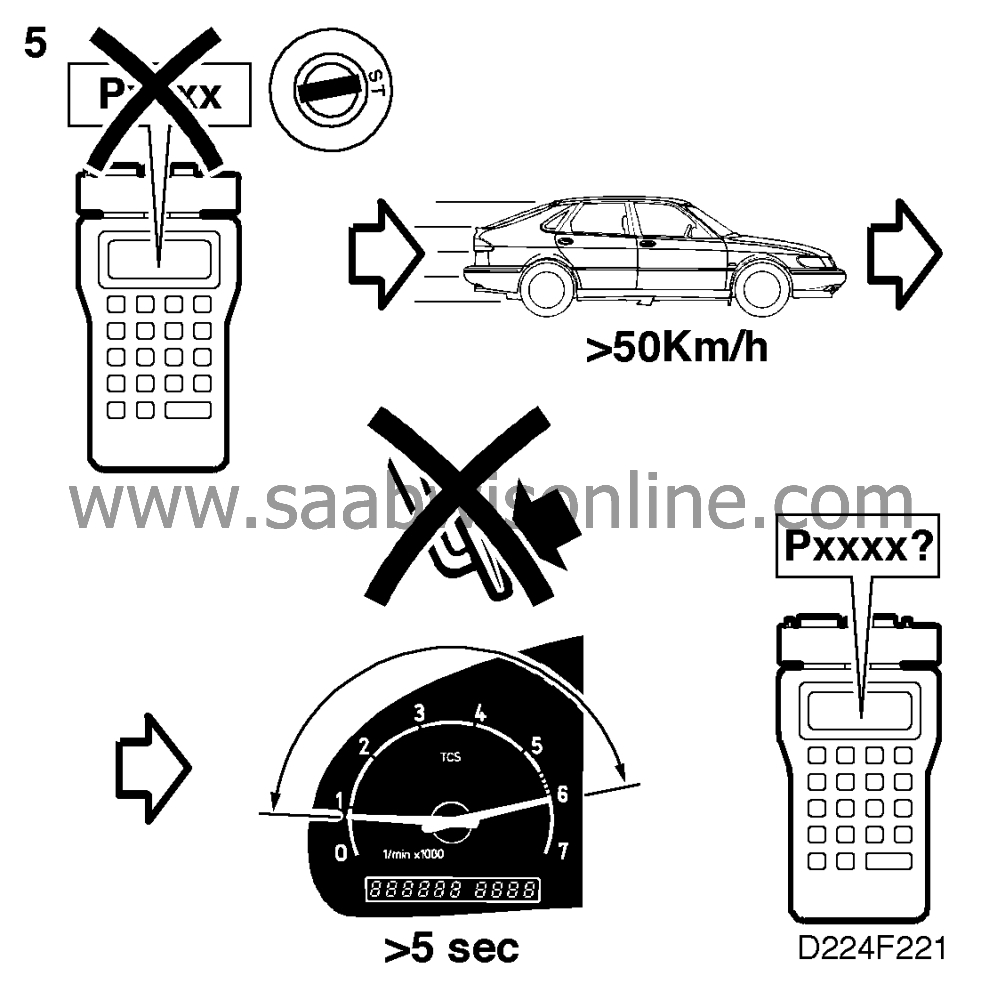
|
-
|
Clear the diagnostic trouble
code.
|
|
-
|
Implementation of driving
cycle:
|
|
|
•
|
Drive the car at a higher speed
than 50 km/h.
|
|
|
•
|
Rev up the engine to maximum rpm for
at least 5 seconds without touching the brake pedal.
|
|
-
|
Evaluation of driving cycle: Check
whether the diagnostic trouble code has recurred.
|
Has the diagnostic trouble code recurred?
Proceed to
 .
.
The remedial measure taken was correct.









